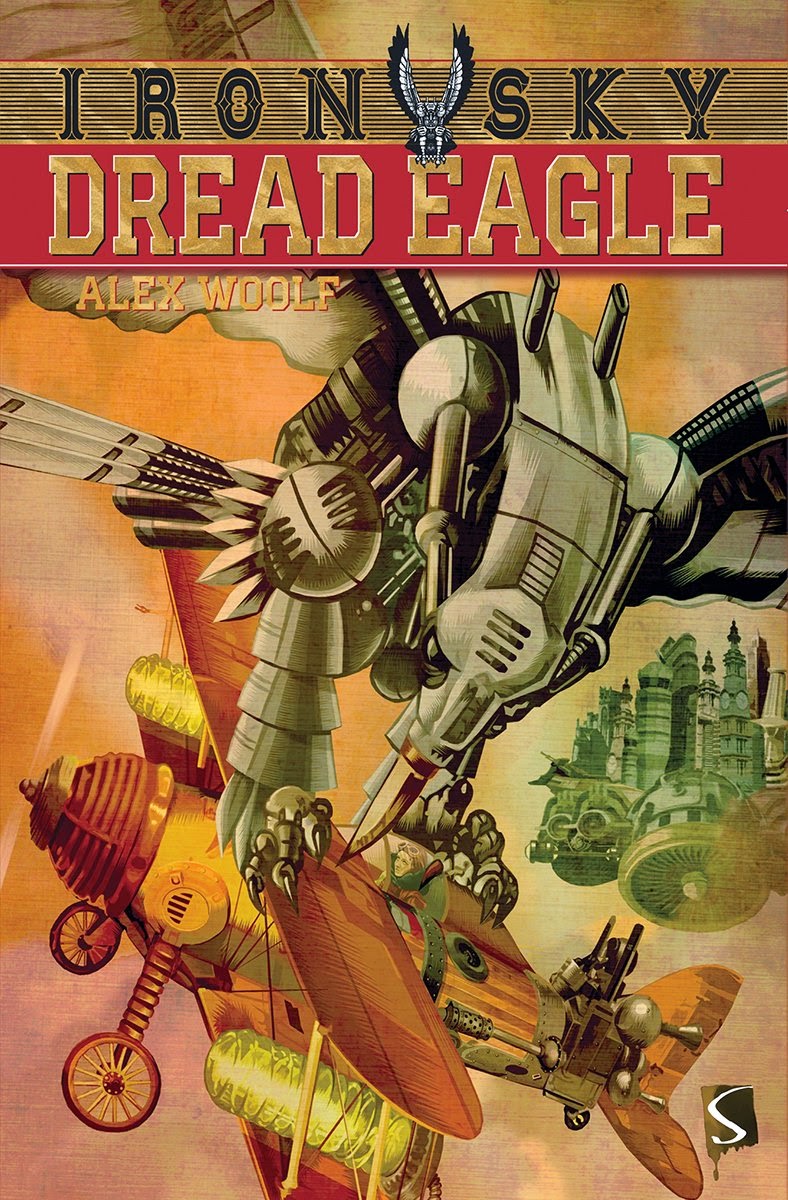Fifty years ago, the world was almost destroyed by a chemical war. Now the world is divided: the mutants and the pure, the broken and the privileged, the damaged and the perfect.
Thirteen years ago, a covert government experimental facility was shut down and its residents killed. The secrets it held died with them. But five extraordinary kids survived.
Today four teenagers are about to discover that their mutant blood brings with it special powers. Rush and three brothers and sisters he can't remember. Two rival factions are chasing them. One by one, they face the enemy. Together, they might just stay alive . . .
I am a big fan of Steve Feasey's Changeling series; if you have kids who are 9+ who like werewolf stories and have not yet discovered these books then they are well worth you getting your hands on them. Zombie Dawn, the fifth and final book in that series, was published back in 2011, and I know I'm not the only fan who has been waiting impatiently to see what Steve produced next. Finally, three years on, from a different publisher and aimed at a slightly older age group, we have Mutant City and it is well worth the wait.
Mutant City is set in a post-apocalyptic world where much of the landscape has been turned into a dangerous wasteland created by all the of the nastiest weapons that you can think of. A large number of people were lucky, living underground for years, until it was deemed safe to emerge. These people now live in City Four in luxury and safety, in a society where disease and imperfections have been eradicated. Unfortunately though, a significant number of people ere not able to make it underground, and since then they have been living in the scorched earth wasteland (think the Cursed Earth outside the walls of Dredd's Mega-City One), many of them migrating towards the city where they have to live outside its walls in slums. Many of these people are physically and/or mentally damaged by the radiation and chemical residues from the war, and disease and starvation are rife.
So far so good. Steve has created a world of the haves and the have-nots, much like a futuristic version of parts of our own world: South Africa under apartheid; the favelas in Brazil; places wherever a minority of people possess a majority of the power and wealth, whilst the majority live in misery. What makes this different from all those other YA post-apocalyptic/dystopian stories is the mutant twist. We aren't talking people whose bodies have been mutated by radiation here: the heroes of Steve Feasey's story are a small group of young people who, a number of years before, were genetically altered, and now find special powers emerging, much to their confusion. Split up and spirited away to safety by rebels whilst they were small children, circumstances now dictate that they come out of hiding. However, due to a telepathic mental-block placed on them by one of their fellow mutants they have no idea why they are now felt drawn towards City Four, journeys that will be fraught with danger for everyone one of them.
Bloomsbury have billed this as being great for fans of Marvel's X-Men, and I see no reason to disagree with this. In fact, if I hadn't read this in the press release I would probably have used the same comparison myself. These youngsters each have a special utility that is largely hidden, although if looked at carefully a normal human would probably feel that there was something slightly different about them; something not-quite-right. Just like the X-Men is very much about the various characters, so too is Mutant City, although as well as being a strength of the book it also creates a slight flaw. Steve Feasey has created a fantastic ensemble of chacarters in Mutant City, but as all of these five special young people (and the various villains and supporting cast) need to be introduced to readers, and as all have been kept separated for years, this means multiple POV shifts. The effect of these is two-fold: in the early stages of the book it means that the plot moves on quite slowly in places, and the sudden shifts to a different character's POV felt slightly jarring in places. There was one shift in particular that had me checking that I didn't have a few pages missing in my proof copy.
Please believe me though when I say that it is well worth persevering though these minor issues as once the story gets going the pace really picks up and we are treated to an action-packed science fiction adventure. As I've already said, the main characters are the stand-out element of this book, and the way they interact injects both humour and pathos into the story. In addition, the host of secondary characters, including a particularly nasty cast of villains, also add to the plot, and set this up to be the first in what I expect to be a thrilling and highly entertaining science fiction series that is perfect for 11+ readers. The X-Men comparison is also a great way to get it into the hands of reluctant readers who are fans of the various X-Men and superhero movies that have become so popular in recent years.
My thanks go to the good people at Bloomsbury for sending me a copy of the book.





















